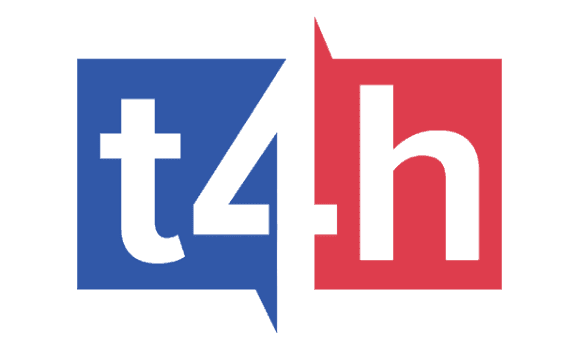Remember Florence Nightingale, the statistician who took on the miseries of the Crimean War to stoically transform nursing into a vocation? Well, thanks to COVID-19, the 2021 cohort of Nightingales is facing it’s own perfect storm of challenges. And it’s having a knock-on affect on the healthcare staffing industry.
The healthcare talent industry matters to all of us
You might think that the healthcare talent industry is light years removed from your particular biosphere, and that events unfolding in the sector don’t really matter a jot to your own life. But, that would probably be a short-sighted view.
The truth is that healthcare staffing matters to all of us because it’s one of the major charging bulls that’s driving economies forward. Health spending has grown faster than other sectors in the U.S. economy for decades and currently represents around 18% of gross domestic product. When the rate of growth in the talent industry catches a cold, it hits all of us in our pockets, when markets dip and the people that run pension funds start to look a little more stressed and pasty in the face.
If that’s not a good enough reason to keep your eye on the ‘healthcare industry ball,’ then here’s another: it’s sad but true that each of us will need to use the healthcare service at some point. One in two of us will get cancer in our lifetime, and those who dodge that particular bullet will end up with diabetes, critical illness, a life changing injury or will fall foul of the next pandemic. Illness is the gift that keeps on giving. One hopes, when that fateful day occurs, there will still be a few Florence Nightingales around to care for us.
It’s a little concerning then, to hear that the healthcare industry is having it’s own little meltdown as the consequence of COVID-19.
Just when you’d think the healthcare industry should be showing growth signals suggesting it was on steroids, it hasn’t
At nearly 4 trillion dollars in annual revenues and 18% of gross domestic product (GDP), the health sector is one of the largest components of the U.S. economy and a major employer of U.S. workers. In the year following the arrival of the pandemic to U.S. shores, the U.S. healthcare industry fell to more than 20% below the previous year’s level. It’s a similar but less pronounced story in Europe.
Why? Apart from anything else, COVID-19 has been a huge distraction, and it’s rebalanced priorities, delayed investments, impacted productivity. While healthcare resources have been kept busy over the past 18-months with the pandemic and the knock-on effect of delayed treatments and surgeries, investment in the industry has taken a back seat.
It may be just a blip, but that blip might have a long tail
Industries don’t grow without the talent to fuel them, and that capacity presently isn’t where it needs to be. Nurses are at the forefront of promoting health, advocating for patients, and advancing the science of care. Speaking to our healthcare industry workforce and MSP partners, we’ve found a similar picture emerging across the industry. There have been a series of impacts on the healthcare industry that are prolonging the impacts of the pandemic on the supply of talent.
#1. The ‘sponge effect’ of the pandemic
COVID-19 has soaked up all of the available nursing, surgical and allied health capacity. Many nurses tell us they’ve had the opportunity to fast-track their career and increase their income by transitioning to the roles in demand that attract higher pay. This workforce migration—from lower paid to higher paid disciplines—has left huge shortages in certain lower skilled job categories that won’t recover quickly.
#2. The emotional toll
Nurses and doctors tell us they’ve had sleepless nights and emotional traumas resulting from their experiences during the heavy days of the pandemic, struggling to cope with the volume of work, the demands for emotional support from patients, the difficulties of coping with the fact that they’ve not always been able to help patients as they’d like, and the inevitable memories of loss. Additionally, intensive care units (ICUs) that usually actively support open visitation have had to close to family members.
Research has found that this change to the work environment has impacted on nurses’ psychosocial well-being and interpersonal relationships, contributing to the incidence of burnout and job satisfaction among nurses. This emotional toll has causing many to re-evaluate whether the vocation is ‘for them’ and, quite understandably, many have left the profession.
#3. Extending shortfalls in ‘new supply’
COVID-19 has put people off from joining the nursing profession. This has exacerbated what was already a concerning situation. The state of fresh talent provision was already falling behind the curve of a massively expanding global healthcare industry. For nearly a decade, the United States has been facing a critical nursing shortage. The shortage is expected to continue for several more years. In fact, over 1 million new registered nurses (RNs) will be needed by 2030 to meet healthcare demands. The United States Bureau of Labor Statistics (BLS) projects this will create a total of 175,900 openings for RNs every year until 2029.
#4. Cumulative impacts on nursing lifestyle and wellbeing
Many hospitals are stretched to near breaking point. This inevitably has an impact on stress levels and the general workplace experience. Anyone working in a high stress environment like that will surely share their experiences with others and this is lowering moral across the industry, and beyond it. In consequence, we can surmise that the halo of COVID-19 is likely to be a lower enthusiasm in new entrants to want to become a nurse, doctor, surgeon or technician.
It’s not all bad news
While the pandemic has stressed the healthcare industry, and its shadow continues to cast a depressing picture, inevitably the sector will recover. After all, governmental policy makers, healthcare strategists and hospital planners can ill afford not to re-balance the industry workforce to cope with the world’s growing demands for healthcare. But it will require more investment from somewhere.
Healthcare workers are rightfully recognized for their ‘above and beyond’ contribution to our society. When we speak to our travellers, they tell us they are optimistic that the industry will continue to get back on its feet. You can sense a determination in their commentary that suggests it’s going to be the people that drive the day to day activities of the healthcare profession that will ultimately re-build the sector from the pandemic and restore confidence in the vocation.

Ian Tomlin
Author

